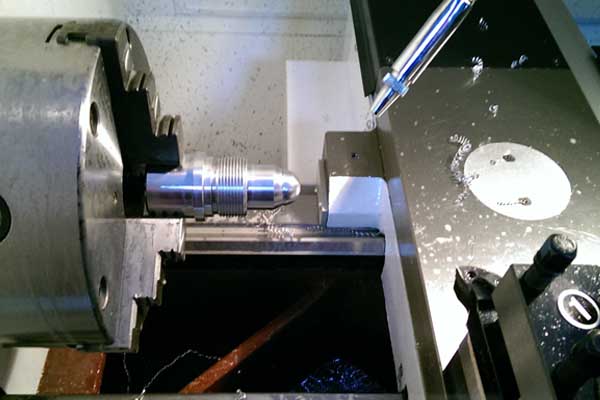Thread processing is one of the very
important technologies of CNC machining. The quality and efficiency of thread
processing will directly affect the processing quality of parts and the
production efficiency of the processing center.

With the improvement of CNC machining
performance and the improvement of cutting tools, the method of thread
machining is also continuously improved, and the accuracy and efficiency of
thread machining are also gradually improved. Actually, thread processing is
mainly tap processing and Thread milling processing.
Tap processing:
Using taps to process threaded holes is the
most commonly used processing method. It is mainly suitable for threaded holes
with small diameter (D <30) and low hole position accuracy.
Determination of the bottom hole of thread
before tapping
The processing of the thread bottom hole
has a great influence on the life of the tap and the quality of the thread
processing. Generally, the diameter of the threaded bottom hole drill is
selected close to the upper limit of the tolerance of the diameter of the
threaded bottom hole,
For example, the diameter of the bottom
hole of the M8 threaded hole is Ф6.7 + 0.27mm, and the diameter of the drill
bit is Ф6.9mm. In this way, the machining allowance of the tap can be reduced,
the load of the tap can be reduced, and the service life of the tap can be
increased.
About the choice of tap
When choosing a tap, first of all, the
corresponding tap must be selected according to the material being processed.
The tool company produces different types of taps according to the different
processing materials, and special attention should be paid when selecting.
Compared with milling cutters and boring
cutters, taps are very sensitive to the processed materials. For example, using
cast iron taps to process aluminum parts can easily lead to thread loss,
buckling, and even tap breakage, resulting in scrapped workpieces. Secondly,
attention should be paid to the difference between through-hole taps and
blind-hole taps. The leading end of the through-hole taps is longer and the
chip removal is the front row of chips. The leading end of the blind hole is
shorter, and the chip evacuation is the rear chip evacuation. Processing blind
holes with through-hole taps does not guarantee thread machining depth.
Furthermore, if a flexible tapping chuck is used, the diameter of the tap shank
and the width of the square should also be the same as the tapping chuck; the
tap shank diameter for rigid tapping should be the same as the diameter of the
spring jacket. In short, only a reasonable choice of taps can ensure the smooth
progress of processing.
Thread milling process:
Thread milling is a milling method that
uses thread milling tools, three-axis linkage of the machining center, that is,
X, Y axis arc interpolation, and Z axis linear feed.
Thread milling is especially suitable for
the thread processing of large parts and valuable materials, which can ensure
the quality of thread processing and the safety of the workpiece. It mainly has
the following characteristics:
1.Fast processing speed, high efficiency
and high processing precision. The tool material is generally cemented carbide,
and the cutting speed is fast. The manufacturing precision of the tool is high,
so the precision of the milled thread is high.
2.The scope of application of milling tools
is large. As long as the pitch is the same, whether it is a left-hand thread or
a right-hand thread, a tool can be used, which is beneficial to reduce the cost
of the tool.
3.Milling processing is easy to evacuate
chips and cool, and the cutting situation is better than that of taps. It is
especially suitable for thread processing of difficult materials such as
aluminum, copper, and stainless steel.
4: Because there is no tool leading end
guide, it is suitable for processing blind holes with short threaded bottom
holes and holes without retreating slots.
Precautions for CNC programming of thread
milling.
The programming of thread milling tools is
different from the programming of other tools. If the machining program is
incorrectly edited, it is easy to cause tool damage or thread machining errors.
Pay attention to the following points when preparing:
1. First, the bottom hole of the thread
should be processed well, and the small diameter hole should be processed with
a drill, and the larger hole should be processed by boring to ensure the
accuracy of the bottom hole of the thread.
2. When the tool is cut in and out, the arc
path should be used, usually 1/2 circle for cutting in or out, and the Z axis
direction should travel 1/2 pitch to ensure the shape of the thread. The tool
radius compensation value should be brought in at this time.
3. X, Y axis arc interpolation for one
week, the main axis should travel a pitch along the Z axis direction,
otherwise, it will cause thread buckle.